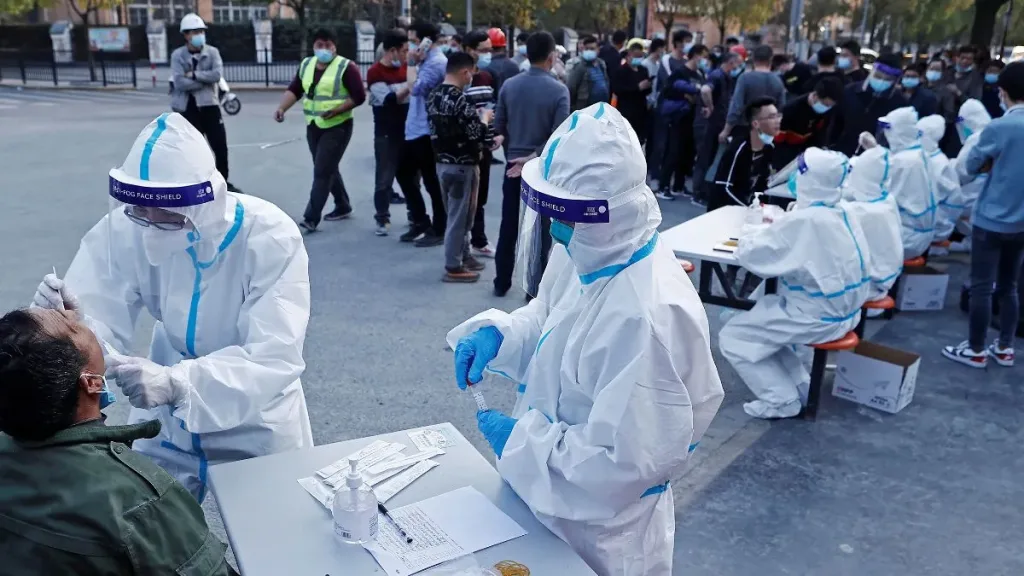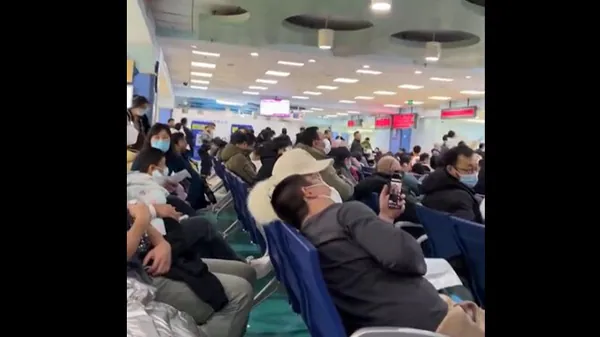The recent outbreak of the Human Metapneumovirus (HMPV) in China has raised global health concerns, with neighboring countries and health organizations closely monitoring the situation. HMPV, a respiratory virus with flu-like symptoms, has drawn comparisons to the early days of the COVID-19 pandemic, sparking fears of another global health crisis. However, health experts and officials have reassured the public that there is no need to panic, as the virus is not new and is considered a seasonal occurrence.
Table of Contents
What is HMPV?
Human Metapneumovirus (HMPV) is a respiratory virus first discovered in 2001. It belongs to the same family as the respiratory syncytial virus (RSV) and primarily causes upper and lower respiratory tract infections. While HMPV can affect individuals of all age groups, it is most severe in:
- Young children
- Elderly individuals
- People with weakened immune systems
Common Symptoms of HMPV:
- Cough
- Fever
- Nasal congestion
- Shortness of breath
In severe cases, HMPV can lead to complications such as bronchitis or pneumonia, particularly in vulnerable populations.

HMPV Virus Cases in China: The Current Situation
The outbreak of HMPV virus cases in China has led to heightened vigilance, with photos and videos of people wearing masks in hospitals circulating on social media. These scenes have drawn comparisons to the early days of the COVID-19 pandemic, fueling concerns about the potential for another global health crisis.
Key Developments:
- China’s Response:
Beijing has addressed the concerns, with foreign ministry spokesperson Mao Ning stating that respiratory infections, including HMPV, tend to peak during the winter season. She reassured citizens and tourists, saying, “It is safe to travel in China,” and emphasized the government’s commitment to public health. - India’s Stance:
India, one of the countries most affected by COVID-19, has taken a cautious but calm approach. Dr. Atul Goel, a senior official from the Directorate General of Health Services (DGHS), has urged people not to panic. He explained that HMPV is similar to other respiratory viruses that cause the common cold and flu-like symptoms.
“We have analyzed data on respiratory outbreaks within the country. There is no substantial increase in December 2024 data, and no cases have been reported in large numbers from any of our institutions,” Dr. Goel said.
- Global Monitoring:
Neighboring countries, including Hong Kong, have reported a few cases of HMPV and are closely monitoring the situation. The World Health Organization (WHO) has yet to issue a statement on the outbreak, and no state of emergency has been declared by either the WHO or the Chinese government.

How Does HMPV Compare to COVID-19?
While the HMPV virus cases in China have drawn comparisons to COVID-19, it’s important to note that the two viruses are fundamentally different.
- HMPV is not new: Unlike COVID-19, which was a novel virus when it emerged in 2019, HMPV has been known to scientists since 2001.
- Seasonal Occurrence: HMPV is considered a seasonal virus, with cases typically peaking during the winter months.
- Lower Risk of Global Spread: Unlike COVID-19, which had a high transmission rate and caused a global pandemic, HMPV is less contagious and primarily affects vulnerable populations.
Health experts have emphasized that while HMPV can cause severe illness in certain individuals, it does not pose the same level of threat as COVID-19.
Symptoms and Prevention
The symptoms of HMPV are similar to those of other respiratory infections, making it difficult to distinguish without specific testing.
Common Symptoms:
- Mild Cases: Cough, fever, nasal congestion, sore throat, and fatigue.
- Severe Cases: Shortness of breath, wheezing, and complications like bronchitis or pneumonia.
Prevention Tips:
- Practice Good Hygiene: Wash your hands frequently with soap and water.
- Avoid Close Contact: Stay away from individuals who are sick, especially if you are in a high-risk group.
- Wear Masks in Crowded Areas: This can help reduce the spread of respiratory infections.
- Stay Home if Unwell: If you experience symptoms, rest and avoid contact with others to prevent spreading the virus.
Global Response
The global response to the HMPV virus cases in China has been cautious but measured. While countries are closely monitoring the situation, there is no indication of a widespread outbreak outside of China.
- Hong Kong: A few cases of HMPV have been reported, prompting authorities to increase surveillance.
- WHO: The World Health Organization has not issued any official statement or declared a state of emergency.
Health experts have reiterated that HMPV is a known virus and that its spread during the winter months is not unusual.

Conclusion
The outbreak of HMPV virus cases in China has understandably raised concerns, especially given the memories of the COVID-19 pandemic. However, health experts and officials have reassured the public that HMPV is a known virus with a seasonal pattern. While it can cause severe illness in vulnerable populations, it does not pose the same level of threat as COVID-19.
By staying informed, practicing good hygiene, and following health guidelines, individuals can protect themselves and their families. As of now, there is no need to panic, but continued vigilance and monitoring are essential to ensure public health and safety.
Read More: Nothing To Alarm: Indian Health Agency On HMPV Concerns Amid Reports from China
FAQs
1. What is the HMPV virus, and how is it different from COVID-19?
The Human Metapneumovirus (HMPV) is a respiratory virus that causes flu-like symptoms, such as cough, fever, and nasal congestion. It primarily affects young children, the elderly, and individuals with weakened immune systems. Unlike COVID-19, HMPV is not a novel virus and has been known since 2001. It is less contagious and is considered a seasonal occurrence, with cases peaking during the winter months.
2. Should I be worried about the HMPV virus cases in China?
Health experts have advised against panic. While the outbreak of HMPV virus cases in China has raised concerns, the virus is not new and is similar to other respiratory infections. The World Health Organization has not declared a state of emergency, and countries like India have reported no significant increase in cases. Practicing good hygiene and taking precautions can help reduce the risk of infection.








